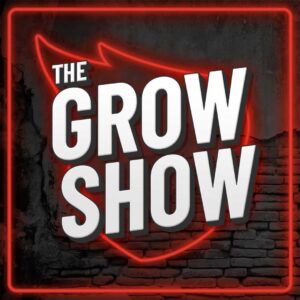Finding the right talent is crucial for any successful business, and it all starts with candidate sourcing. This is where recruiting teams actively hunt for the best candidates even before kicking off the whole recruitment process. It’s the groundwork that sets up effective recruiting, ensuring your talent pipeline is brimming with top-notch candidates. Grasping the importance of sourcing can dramatically boost your hiring results. By identifying and engaging potential candidates early on, companies can save time, cut hiring costs, and improve the quality of their hires.
Contents
Candidate Sourcing vs Traditional Recruiting
Candidate sourcing is all about finding, engaging, and attracting potential candidates for current or future job openings. Unlike traditional recruiting, which covers everything from job posting to onboarding, candidate sourcing focuses on the early stages: spotting and connecting with candidates who might not be actively looking for a job. Sourcing involves identifying and engaging potential candidates, building relationships, understanding their career goals, and presenting opportunities that align with their aspirations. Once sourcing has identified potential candidates, recruiting takes over, encompassing the full spectrum of hiring activities, such as interviewing, negotiating job offers, and onboarding new hires.
How to Get Started With Candidate Sourcing
To master candidate sourcing, it’s essential to follow a structured approach. Incorporating these steps into your candidate sourcing process will help you build a strong talent pipeline, ensuring you have access to the best candidates when hiring. By proactively sourcing candidates, you can stay ahead in the competitive job market and secure top talent for your organization. Here are the steps to take:
- Identifying the Needs: The first step in candidate sourcing is understanding the specific job requirements and qualifications needed for the role. This involves working closely with hiring managers to clearly define the skills, experience and attributes the ideal candidate should possess. Knowing these details upfront helps create a focused and efficient sourcing strategy.
- Creating a Candidate Persona: define your ideal candidate by creating a persona. This is a detailed description of the type of candidate you are looking for, including their skills, experience, career goals, and even their preferred working style. A well-defined candidate persona ensures that your sourcing efforts are targeted and effective, attracting qualified candidates who are a good cultural fit for your organization.
- Building a Sourcing Strategy: Once you clearly understand the job requirements and the ideal candidate profile, it’s time to build a sourcing strategy. This involves selecting the right tools and platforms to reach potential candidates. Consider utilizing a mix of job boards, career sites, social media platforms, and professional networks. Leveraging technology, such as AI and recruiting software, can enhance your sourcing efforts by automating repetitive tasks and identifying top candidates more efficiently.
Best Ways to Source Candidates
Finding the right candidates means exploring various sourcing channels to reach the most qualified talent for your organization. Here are some practical ways to source candidates:
Job Boards and Career Sites
Job boards and career sites like Indeed, LinkedIn, and ZipRecruiter are popular platforms for candidate sourcing. They offer vast databases of resumes and job seekers actively looking for new opportunities.
Tips for Optimizing Job Postings
- Use Clear and Concise Titles: Ensure your job titles are straightforward and accurately reflect the role.
- Include Keywords: Incorporate relevant keywords that candidates are likely to search for.
- Highlight Benefits and Culture: Showcase what makes your company unique and a great workplace.
- Provide Detailed Descriptions: Clearly outline the responsibilities, qualifications, and any special job requirements.
Social Media Platforms
Social media platforms are powerful tools for sourcing candidates. Platforms like LinkedIn, Facebook, and Twitter can help you reach a wider audience and engage with potential candidates in a more casual setting.
Tips for Using LinkedIn, Facebook, and Twitter for Sourcing
- LinkedIn: Utilize LinkedIn’s advanced search features and groups to find candidates with specific skills and experiences. Engage with potential candidates by sharing insightful content and commenting on their posts.
- Facebook: Join industry-specific groups and participate in discussions. Use Facebook’s job posting feature to reach local candidates.
- Twitter: Follow industry hashtags and participate in relevant Twitter chats. Share job openings and company news to attract followers who might be interested in your roles.
Engaging with Potential Candidates on Social Media
- Be Responsive: Quickly reply to messages and comments from potential candidates.
- Share Content: Regularly post industry news, job openings, and company updates to engage your audience.
- Personalize Outreach: Send personalized messages to candidates, mentioning their skills and how they align with the job opening.
Networking Events and Job Fairs
Attending industry-specific events and job fairs allows you to meet potential candidates face-to-face, building personal connections that can be valuable in the hiring process.
Benefits of Attending Industry-Specific Events
- Access to Qualified Candidates: Meet candidates who are serious about their career development.
- Brand Visibility: Increase your company’s presence in the industry.
- Immediate Interaction: Engage with candidates directly, speeding up the initial stages of the hiring process.
How to Effectively Network and Gather Potential Leads
- Prepare in Advance: Research the event and plan which sessions to attend and whom to meet.
- Bring Marketing Materials: Have business cards, brochures, and other materials ready to distribute.
- Follow-Up: After the event, follow up with the contacts you’ve made to maintain the relationship.
Employee Referrals
An employee referral program can be a highly effective sourcing strategy. Employees can refer candidates from their network, often leading to higher-quality hires.
Creating an Employee Referral Program
- Set Clear Guidelines: Define the criteria for a successful referral.
- Offer Incentives: Provide bonuses or other rewards to employees who refer successful candidates.
- Promote the Program: Regularly remind employees about the referral program and its benefits.
Encouraging Employees to Refer High-Quality Candidates
- Communicate the Needs: Clearly explain what types of candidates you are looking for.
- Recognize Contributions: Publicly acknowledge and reward employees who make successful referrals.
Passive Candidate Outreach
Many of the best candidates are not actively looking for new jobs. Reaching out to passive candidates can significantly broaden your talent pool.
Strategies for Reaching Out to Passive Candidates
- Personalized Messaging: Craft personalized messages highlighting how the opportunity aligns with the candidate’s background and interests.
- Build Relationships: Engage with passive candidates over time, sharing relevant industry news and updates about your company.
- Multi-Touch Approach: Use a combination of communication channels to maintain contact and build interest.
Leveraging these strategies can enhance your candidate sourcing efforts and help you find the best talent for your organization.
Track Success with These Top 4 Sourcing Metrics
Tracking the right metrics is crucial for optimizing your candidate sourcing efforts and ensuring you’re attracting the best talent. Here are the top four metrics your hiring team should follow:
1. Time to Fill
Time to fill measures the number of days it takes to fill a position from the moment it was posted to the moment a candidate accepts the offer.
Why It Matters: This metric helps you understand how efficient your recruitment process is. A shorter time to fill often indicates a streamlined process and a strong pipeline of candidates, while a longer time might signal bottlenecks or a need for process improvement.
How to Track: Use your applicant tracking system (ATS) to record the date a job is posted and the date the offer is accepted. Analyze these dates to identify trends and areas for improvement.
2. Source of Hire
Source of hire identifies where your candidates come from, such as job boards, career sites, social media platforms, employee referrals, or recruitment agencies.
Why It Matters: Knowing which sources yield the best candidates helps you allocate your resources more effectively. You can invest more in the channels that provide the highest quality candidates and reduce spending on less effective sources.
How to Track: Include source tracking in your ATS or recruitment software. Ask candidates how they heard about the position during the application process and record this information for analysis.
3. Candidate Quality
Candidate quality assesses how well candidates meet the job requirements and perform once hired. This can be measured through performance reviews, retention rates, and feedback from hiring managers.
Why It Matters: High-quality candidates are more likely to perform well and stay with the company longer, reducing turnover and improving overall productivity. Tracking this metric helps you understand which sourcing strategies bring in the best talent.
How to Track: Collect feedback from hiring managers and track performance reviews of new hires. Use this data to evaluate the effectiveness of your sourcing channels and refine your strategies accordingly.
4. Cost per Hire
Cost per hire measures the total expenses incurred in the hiring process, including job advertising, recruitment agency fees, employee referral bonuses, and internal recruiting team costs.
Why It Matters: Understanding your cost per hire helps you manage your recruitment budget more effectively. It allows you to see where you can cut costs without sacrificing the quality of hires.
How to Track: Calculate all recruitment-related expenses for a given period and divide by the number of hires made during that time. Use this data to compare the cost-effectiveness of different sourcing channels and methods.
By focusing on these metrics, your hiring team can make data-driven decisions, streamline the recruitment process, and attract top talent more efficiently.
Take Action with These Tips for Sourcing Success
Looking to up your candidate sourcing game? It’s all about implementing smart strategies that can make a big difference. By harnessing the power of technology, keeping up with industry trends, and showcasing your company as a great place to work, you can attract top-notch talent more effectively. Here are some actionable tips that will help you streamline your sourcing process and land the best candidates for your team.
- Using AI and Recruiting Software: AI can help automate repetitive tasks like resume screening and identify top candidates faster. Recruiting software can streamline the sourcing process, providing tools for better candidate management and communication.
- Staying Updated with Industry Trends: Attend conferences, webinars, and training sessions regularly. Subscribe to industry publications and follow thought leaders to stay abreast of the latest trends and best practices in sourcing.
- Attracting Candidates Through a Compelling Brand: To attract candidates, showcase your company’s culture, values, and benefits. Use social media, company websites, and employee testimonials to highlight what makes your organization a great workplace.
Key Takeaways
Mastering candidate sourcing is crucial for building a strong talent pipeline and successful recruitment. By proactively identifying and engaging potential candidates early, you can significantly improve hiring outcomes. Key steps include understanding job requirements, creating detailed candidate personas, and developing an effective sourcing strategy. Utilize various channels like job boards, social media, networking events, and employee referrals to reach diverse candidates. Tracking metrics such as Time to Source, Quality of Hire, Source of Hire, and Candidate Engagement ensures continual improvement. Leverage technology, stay updated with industry trends, and build a compelling employer brand to attract top talent.
Take your candidate sourcing to the next level. Contact Talent Solutions today! Our team of experts specializes in proactive sourcing strategies tailored to your industry, ensuring you find the perfect candidates quickly and efficiently. With access to top career platforms, advanced technology, and a deep understanding of various sectors, we can help you build a strong talent pipeline that meets your unique hiring needs. Partner with Talent Solutions for personalized recruiting support and expertise that will elevate your hiring process. Reach out now and discover how we can help you secure the best talent for your organization.

Madison Hendrix
Madison has worked in SEO and content writing at Abstrakt for over 5 years and has become a certified lead generation expert through her hours upon hours of research to identify the best possible strategies for companies to grow within our niche industry target audiences. An early adopter of AIO (A.I. Optimization) with many organic search accolades - she brings a unique level of expertise to Abstrakt providing helpful info to all of our core audiences.
- Madison Hendrix#molongui-disabled-link
- Madison Hendrix#molongui-disabled-link
- Madison Hendrix#molongui-disabled-link
- Madison Hendrix#molongui-disabled-link







